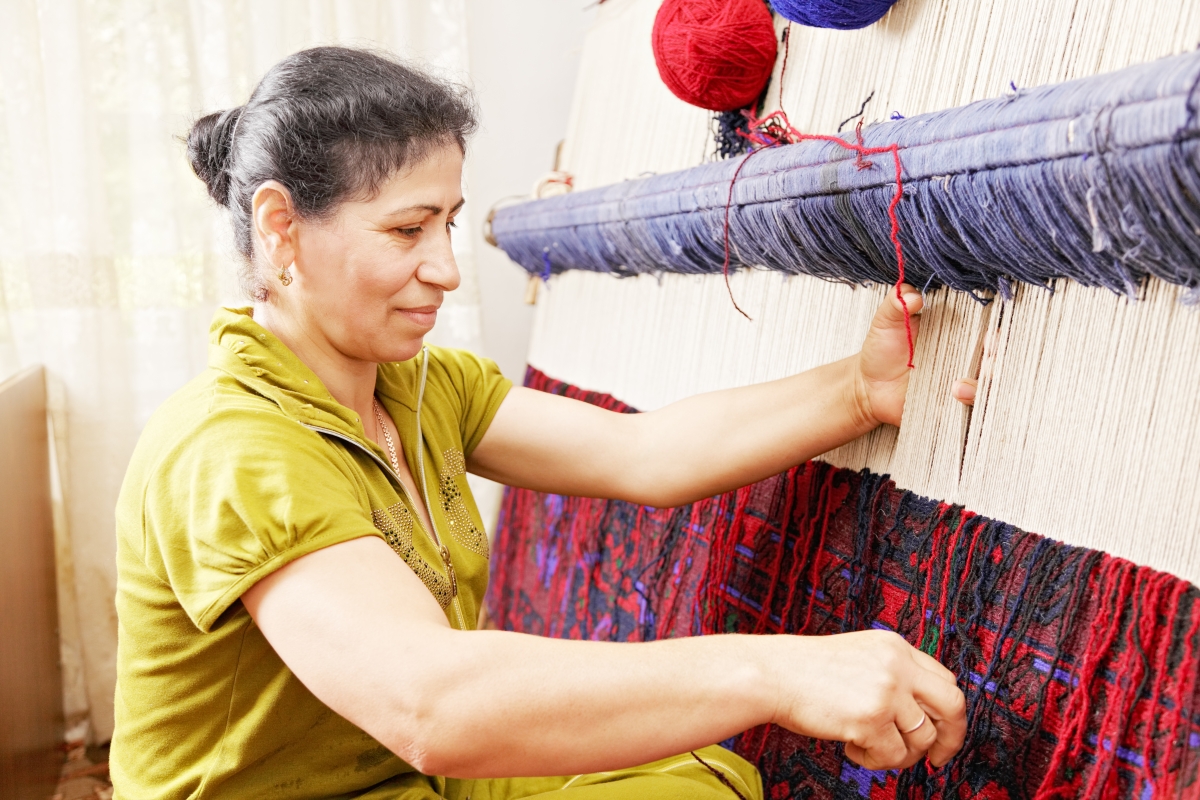Career Overview
Industrial sewing machine operators:
- Operate sewing machines to sew fabric, fur, leather or synthetic materials to produce or repair garments and other articles
- Work for clothing, footwear, textile products, fur products establishments and other manufacturing establishments and by furriers
Job Titles
Duties
Industrial sewing machine operators:
- Put together pieces of garments by matching patterns and dye lots
- Run single, double or multi-needle serging, flat bed felling, banding and other sewing machines, to join sections of garments or other articles into finished products on a piece-work or production basis
- Operate fur sewing machines to join fur pelt strips to required size and shape and join pelts into garment sections or shells
- Run stitching machines to sew leather parts together for leather garments, handbags, shoes and other leather articles
- Operate serging machines to sew and overcast edges of material simultaneously
- Run tackers, pocketsetters, buttonhole makers and fusing, hemmer and other machines to perform various operations in the fabrication of garments and other articles
- Examine garments and operate sewing machines, sergers and other machines to repair garments and other articles during the manufacturing process
- Complete production reports
- May do minor maintenance and repairs on sewing machine
Earnings
Earnings is income that workers receive in exchange for their labour. Depending on the type of employment, earnings can be in the form of wages (hourly), salaries (fixed monthly or annual) or self-employed earnings.
Work Environment
# Workers Employed
1,280% Employed Full Time
43%Key aspects of the work in this occupation:
- Work takes place in a regular controlled indoor environment
- Working with equipment, instruments, machinery or power/hand tools can be a source of injury
- The workplace may contain airborne particles such as textile dust
Career Pathways
Sewing machine operators may progress to supervisory positions with experience.
Related Careers
Occupational Interests
It’s important to understand what kinds of occupations align with your interests.
For more about occupational interests visit Skills for the Future Workforce > Characteristics.
Here are the top occupational interest(s) for this career profile:
Education, Training and Skills
- Some secondary school education is usually required
- Experience operating a sewing machine is usually required
- On-the-job training may be provided
Education programs in B.C.
The following program areas are related to this occupation:
- Academic/Basic Upgrading

Skills
Every job calls for a certain set of skills. Knowing those skills is the first step in finding a good career fit.
Here, you will find the 10 most relevant workplace skills. Some are more important to achieving success in a certain career than others. These skills may come naturally to you or you may need to gain them through education, training and experience.
See the list of work-related skills below, ranked in order of importance for this career. Check out the list and see if this career matches your skills—take that first step!
Keeping track of and assessing your performance, other individuals, or organizations to make improvements or take corrective action.
Watching gauges, dials or other indicators to make sure that a machine is working properly.
Conducting tests and inspections of products, services or processes to evaluate quality or performance.
Giving full attention to what other people are saying, taking time to understand the points being made, asking questions as appropriate, and not interrupting at inappropriate times.
Using logic and reasoning to identify the strengths and weaknesses of alternative solutions, conclusions or approaches to problems.
Considering the relative costs and benefits of potential actions to choose the most appropriate one.
Controlling operations of equipment or systems.
Understanding written sentences and paragraphs in work-related documents.
Managing one’s own time and the time of others.
Being able to solve novel, ill-defined problems in complex, real-world settings.
Labour Market Statistics
Discover data, facts and information that have been gathered and analyzed. Learn about the characteristics of the economy and labour market in B.C.
Employment
Find out about employment types and trends by region and industry.
Employment
1,280Employment by Region







| Region | Employment | % Employment of this Occupation |
|---|---|---|
| Cariboo | 0 | 0.0% |
| Kootenay | 10 | 0.8% |
| Mainland/Southwest | 1,120 | 87.2% |
| North Coast and Nechako | 0 | 0.0% |
| Northeast | 0 | 0.0% |
| Thompson-Okanagan | 40 | 3.1% |
| Vancouver Island/Coast | 95 | 7.4% |
Labour Market Outlook
The B.C. Labour Market Outlook is a 10-year forecast of the expected supply and demand for labour in the province. It’s usually updated every year. The purpose is to provide British Columbians with the knowledge to make informed decisions on careers, skills training, education and hiring.
Forecasted Job Openings (2024-2034)
680Forecasted Job Openings
Forecasted Employment Growth Rate
Composition of Job Openings
Job Openings by Region (2024-2034)







| Region | Job Openings | Avg. Annual Employment Growth |
|---|---|---|
| Cariboo | Not available | Not available |
| Kootenay | Not available | Not available |
| Mainland/Southwest | 660 | 1.2% |
| North Coast and Nechako | Not available | Not available |
| Northeast | Not available | Not available |
| Thompson-Okanagan | 10 | 0.7% |
| Vancouver Island/Coast | 20 | -0.9% |
Industry Highlights
Learn about the opportunities in B.C.'s major industries, including employment trends, earning potential, locations of work and more.
Forecasted Job Openings by Industry
| Industry | Job Openings (2024-2034) |
|---|---|
| Manufacturing | 380 |
| Retail Trade | 160 |
| Wholesale Trade | 40 |
| Repair, Personal and Non-Profit Services | 30 |
| Professional, Scientific and Technical Services | 30 |
Resources
Resource information is currently not available.








